



































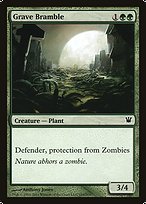





























Innistrad is a large set with 101 commons, 60 uncommons, 53 rares, 15 mythic rares, three variations of each standard basic land, and 20 double-faced cards. This is the normal size for a large set of this era with the addition of doubled-faced cards, and fewer basic lands. Foil cards are included in booster packs with advertised odds of 1 : 67 cards. The set was printed in English in the USA and Belgium.
Innistrad was sold in 15 card booster packs (which contain an additional ad card). Booster boxes have 36 packs.
The US printing uses sequential collation with C1/C2 common collation (slightly modified to account for fewer commons in each pack).
Packs are back-facing and have only 9 commons followed by 3 uncommons, a rare, and an ad card. The last two cards will be a double-faced card and either a basic land or a checklist. A checklist will be before the double-faced card and a basic land will be after it. If there is a foil, it will be the last card. A foil double-faced card will displace the normal double-faced card. Other foils will displace a common.
| 9 Commons | 3 Uncommons | 1 Rare | 1 Ad Card | 1 Checklist | 1 DFC | |
| 9 Commons | 3 Uncommons | 1 Rare | 1 Ad Card | 1 DFC | 1 Land | |
| 8 Commons | 3 Uncommons | 1 Rare | 1 Ad Card | 1 Checklist | 1 DFC | 1 Foil |
| 8 Commons | 3 Uncommons | 1 Rare | 1 Ad Card | 1 DFC | 1 Land | 1 Foil |
| 9 Commons | 3 Uncommons | 1 Rare | 1 Ad Card | 1 Checklist | 1 Foil DFC | |
| 9 Commons | 3 Uncommons | 1 Rare | 1 Ad Card | 1 Land | 1 Foil DFC | |
Packs are evenly split between C1 commons and C2 commons. C1 packs will contain 2×A + 2×B + 5×C or 3×A + 1×B + 5×C. C2 packs will contains 3×A + 2×B + 4×C or 4×A + 3×B + 2×C.
| A | A | B | B | C1 | C1 | C1 | C1 | C1 |
| A | A | A | B | C1 | C1 | C1 | C1 | C1 |
| A | A | A | B | B | C2 | C2 | C2 | C2 |
| A | A | A | A | B | B | B | C2 | C2 |
Non-double-faced foils displace common cards. Foil commons (and basic lands) displace C1 commons. (As far as I've seen, these are always in packs with basic lands.) Foil uncommons displace B commons, and foil rares and mythic rares displace A commons.
Uncommons are printed on one sheet with each card appearing twice (and one filler). This is divided into a 66-card A run (with 33 distinct cards) and a 54-card B run (with 27 distinct cards). Packs can have either 2 A cards followed by 1 B card, or 1 A card followed by 2 B cards. Since the runs are unbalanced, 2 A cards happens 13/20 of the time.
Basic lands appear in 1/4 of packs and checklists occur in the other 3/4. Basic lands always appear in C1 packs.
The double-faced cards are printed on one sheet. The mythic rare appears once, the rares appear two times, the uncommons appear six times, and the commons appear eleven times. (This fills the sheet.) The sheet is divided into a 66-card run (with the mythic, four rares, four uncommons, and three commons) and a 55-card run (with two rares, three uncommons, and three commons).
Calculating the exact rarities of double-faced cards depends on unknown foil rates, but they are all very similar to the non-double-faced rarities.
Rares are printed on two sheets with each sheet divided into a 66-card run and a 55-card run. (This is a change from earlier sets that had only one rare sheet.) Each rare card has four copies in one of the four runs, except Evil Twin is split between the 66-card runs and Kessig Wolf Run which is split between the 55-card runs. All the mythics have two copies in one of the 55-card runs.
The A common run consists of 33 different cards each appearing twice. It includes cards of all colors and colorless cards. The choice of first card is mostly arbitrary.
 |  |  |  |  |  |  |  |  |  |  |
 |  |  |  |  |  |  |  |  |  |  |
 |  |  |  |  |  |  |  |  |  |  |
 |  |  |  |  |  |  |  |  |  |  |
 |  |  |  |  |  |  |  |  |  |  |
 |  |  |  |  |  |  |  |  |  |  |
The B common run consists of 22 different cards each appearing three times. It includes cards of all colors and colorless cards. The choice of first card is mostly arbitrary.
 |  |  |  |  |  |  |  |  | 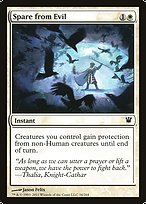 |  |
 |  |  |  |  | 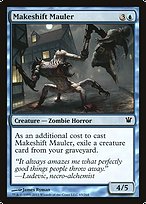 |  |  |  |  |  |
 |  |  |  |  |  |  |  |  |  |  |
 |  |  |  |  |  |  |  |  |  |  |
 | 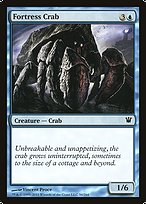 |  |  |  |  |  |  |  |  |  |
 |  |  |  |  |  |  |  |  |  |  |
The C1 common run consists of 27 different cards each appearing twice plus Shimmering Grotto, the short-printed common. It includes cards of all colors and colorless cards. The choice of first card is mostly arbitrary.
 |  |  |  |  |  |  |  |  |  |  |
 |  |  |  | 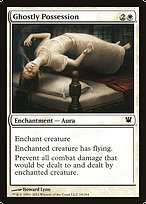 |  |  |  |  |  |  |
 |  |  |  |  |  |  |  |  |  |  |
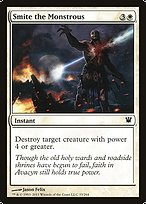 |  |  |  |  |  |  |  |  |  |  |
 |  |  |  |  |  |  |  |  |  |  |
The C2 common run consists of 18 different cards each appearing three times plus Shimmering Grotto, the short-printed common. It includes cards of all colors and colorless cards. The choice of first card is mostly arbitrary.
 |  | 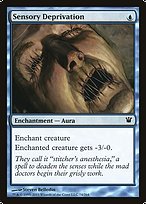 |  |  |  |  |  |  |  |  |
 |  | 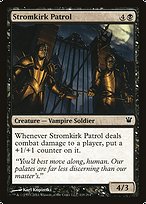 |  |  |  |  |  | 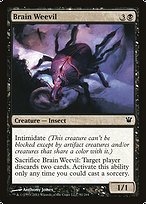 |  |  |
 |  |  |  |  |  |  |  |  |  |  |
 |  |  |  |  |  |  |  |  |  |  |
 |  |  |  |  |  |  |  |  |  |  |
The A uncommon run consists of 33 different cards each appearing twice. The choice of first card is mostly arbitrary.
 |  | 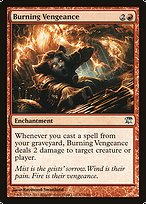 |  |  |  |  |  |  |  |  |
 |  |  |  |  |  |  |  |  |  |  |
 |  |  |  |  |  |  |  |  |  |  |
 |  |  |  | 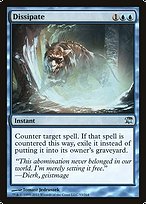 |  |  |  |  |  |  |
 |  |  |  |  |  |  |  |  |  |  |
 |  |  |  |  |  |  |  |  |  |  |
The B uncommon run also consists of 27 different cards each appearing twice. The choice of first card is mostly arbitrary.
 |  |  | 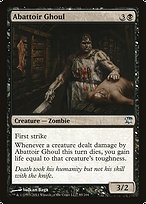 |  |  |  |  |  |  |  |
 |  |  |  |  |  |  |  |  |  |  |
 |  |  | 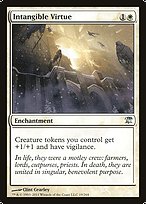 |  |  |  |  |  |  |  |
 |  |  |  |  |  | 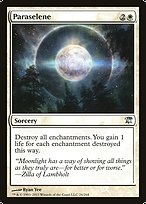 |  |  |  |  |
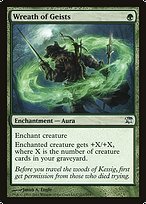 |  |  |  |  |  |  |  |  |  |
The A double-faced run contains one mythic rare card, four rares each appearing twice, four uncommons each appearing six times and three commons each appearing eleven times. The choice of first card is mostly arbitrary.
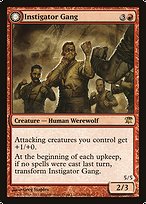 |  |  |  |  |  |  |  |  |  |  |
 |  |  |  |  |  |  |  |  |  |  |
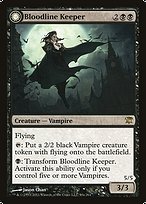 |  |  |  |  |  |  |  |  |  |  |
 |  |  |  |  |  |  |  |  |  |  |
 |  |  |  |  |  |  |  |  |  |  |
 |  |  |  |  |  |  |  |  |  |  |
The B double-faced run contains two rares each appearing twice, three uncommons each appearing six times and three commons each appearing eleven times. The choice of first card is mostly arbitrary.
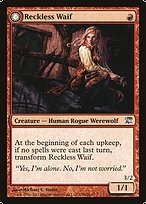 |  |  |  | 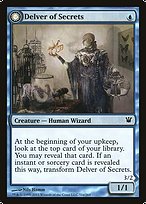 | 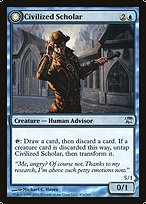 |  |  |  |  |  |
 |  |  |  |  |  |  |  |  |  |  |
 |  |  |  |  |  |  |  |  |  |  |
 |  |  |  |  |  |  |  |  |  |  |
 |  |  |  |  |  |  |  |  |  |  |
Note that the names of these runs are somewhat non-canonical.
The A rare run consists of 15 mythic rare cards each appearing twice plus 6 rare cards each appearing four times and one copy of Kessig Wolf Run. (The other copies of Kessig Wolf Run are in run B.) The choice of first card is mostly arbitrary.
 | 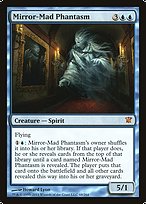 |  |  | 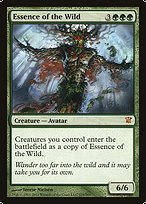 |  |  | 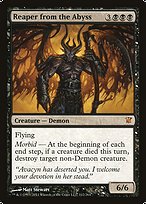 |  | 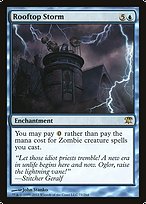 |  |
 |  |  |  |  |  |  |  |  |  |  |
 |  |  |  |  |  |  |  |  |  |  |
 |  |  |  |  |  |  |  |  |  |  |
 |  |  |  |  |  |  |  |  |  | 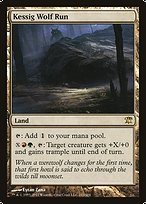 |
The B rare run consists of 13 rare cards each appearing four times plus three copies of Kessig Wolf Run. (The other copy of Kessig Wolf Run is in run A.) The choice of first card is mostly arbitrary.
 | 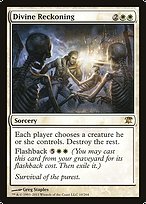 |  |  |  | 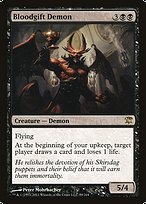 |  |  |  |  |  |
 |  |  |  |  |  |  |  |  |  |  |
 |  |  |  |  |  |  |  |  |  |  |
 |  |  |  |  |  |  |  |  |  |  |
 |  |  |  |  |  |  |  |  |  |  |
The C rare run consists of 16 rare cards each appearing four times plus two copies of Evil Twin. (The other copies of Evil Twin are in run D.) The choice of first card is mostly arbitrary.
 |  |  |  |  | 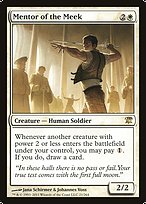 | 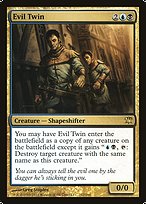 |  | 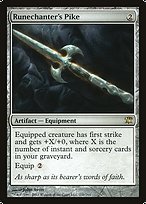 | 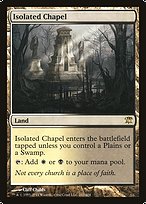 |  |
 |  |  |  |  |  |  |  | 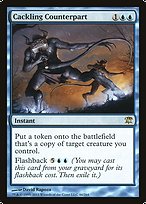 |  |  |
 |  |  |  |  |  |  | 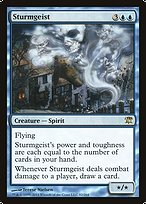 |  |  |  |
 |  |  |  |  |  |  |  |  |  |  |
 |  |  |  |  |  |  |  |  |  |  |
 |  |  |  |  |  |  |  |  |  |  |
The D rare run consists of 16 rare cards each appearing four times plus two copies of Evil Twin. (The other copies of Evil Twin are in run C.) The choice of first card is mostly arbitrary.
 |  |  |  |  |  | 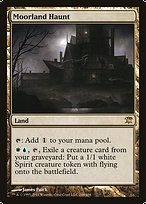 |  |  |  |  |
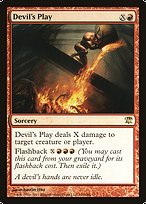 |  |  |  |  |  |  |  |  |  |  |
 |  |  |  |  |  |  |  |  |  |  |
 |  |  |  |  |  |  |  |  |  |  |
 |  |  |  |  |  |  |  |  |  |  |
 |  |  |  |  |  |  |  |  |  |  |
Most of the marketing cards in Innistrad have a token or tip on the front face. In addition, there is a card that has an advertisement for Magic Duels on the front face and another card that has an advertisement for MTG Tactics. The cards are printed on an 11 × 11 sheet with different items appearing different numbers of times. In some boxes, the sequence is reversed, so the choice of first card and the direction are both mostly arbitrary.
There are two versions of the Innistrad marketing card sheet. The first version seems to have been used for older boxes and the second versions seems to have been used for newer boxes. The second version of the sheet has the Duels ad removed.
 | 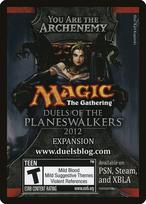 |  |  |  |  |  |  |  |  |  |
 |  |  |  |  | 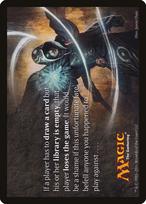 |  |  |  |  |  |
 |  |  |  |  |  |  |  |  |  |  |
 |  |  |  |  |  |  |  |  |  |  |
 |  |  |  |  |  |  |  |  |  |  |
 |  |  |  |  |  |  |  |  |  |  |
 |  |  |  |  |  |  |  |  |  |  |
 |  |  |  |  |  |  |  |  |  |  |
 |  |  |  |  |  |  |  |  |  |  |
 |  |  |  |  |  |  |  |  |  |  |
 |  |  |  |  |  |  |  |  |  |  |
| Token Rarity | ||
|---|---|---|
 Angel × 1 Angel × 1 |  Demon × 2 Demon × 2 |  Ooze × 2 Ooze × 2 |
 Vampire × 2 Vampire × 2 |  Wolf × 2 Wolf × 2 |  Booster Draft Tip Card × 3 Booster Draft Tip Card × 3 |
 Defeating Planeswalkers Tip Card × 3 Defeating Planeswalkers Tip Card × 3 |  Empty Library Tip Card × 3 Empty Library Tip Card × 3 |  Hexproof Tip Card × 3 Hexproof Tip Card × 3 |
 Limited Tip Card × 3 Limited Tip Card × 3 |  Spider × 3 Spider × 3 |  Using Planeswalkers Tip Card × 3 Using Planeswalkers Tip Card × 3 |
 Wolf × 3 Wolf × 3 |  Casual Formats Tip Card × 4 Casual Formats Tip Card × 4 |  Curses Tip Card × 4 Curses Tip Card × 4 |
 Deck Construction Tip Card × 4 Deck Construction Tip Card × 4 |  Deck Proportions Tip Card × 4 Deck Proportions Tip Card × 4 |  Flashback Tip Card × 4 Flashback Tip Card × 4 |
 Gatherer Tip Card × 4 Gatherer Tip Card × 4 |  Homunculus × 4 Homunculus × 4 |  Morbid Tip Card × 4 Morbid Tip Card × 4 |
 Transform Tip Card × 5 Transform Tip Card × 5 |  Zombie × 7 Zombie × 7 |  Zombie × 7 Zombie × 7 |
 Zombie × 7 Zombie × 7 |  Tactics Ad Card × 8 Tactics Ad Card × 8 |  Duels 2012 Ad Card × 10 Duels 2012 Ad Card × 10 |
 Spirit × 12 Spirit × 12 | ||
The second version of the sheet has the Duels ad removed, so a few of the other cards are slightly more common.
 |  |  |  |  |  |  |  |  |  |  |
 |  |  |  |  |  |  |  |  |  |  |
 |  |  |  |  |  |  |  |  |  |  |
 |  |  |  |  |  |  |  |  |  |  |
 |  |  |  |  |  |  |  |  |  |  |
 |  |  |  |  |  |  |  |  |  |  |
 |  |  |  |  |  |  |  |  |  |  |
 |  |  |  |  |  |  |  |  |  |  |
 |  |  |  |  |  |  |  |  |  |  |
 |  |  |  |  |  |  |  |  |  |  |
 |  |  |  |  |  |  |  |  |  |  |
| Token Rarity | ||
|---|---|---|
 Angel × 1 Angel × 1 |  Ooze × 2 Ooze × 2 |  Wolf × 2 Wolf × 2 |
 Defeating Planeswalkers Tip Card × 3 Defeating Planeswalkers Tip Card × 3 |  Demon × 3 Demon × 3 |  Empty Library Tip Card × 3 Empty Library Tip Card × 3 |
 Hexproof Tip Card × 3 Hexproof Tip Card × 3 |  Limited Tip Card × 3 Limited Tip Card × 3 |  Spider × 3 Spider × 3 |
 Using Planeswalkers Tip Card × 3 Using Planeswalkers Tip Card × 3 |  Vampire × 3 Vampire × 3 |  Booster Draft Tip Card × 4 Booster Draft Tip Card × 4 |
 Deck Construction Tip Card × 4 Deck Construction Tip Card × 4 |  Deck Proportions Tip Card × 4 Deck Proportions Tip Card × 4 |  Gatherer Tip Card × 4 Gatherer Tip Card × 4 |
 Wolf × 4 Wolf × 4 |  Casual Formats Tip Card × 5 Casual Formats Tip Card × 5 |  Curses Tip Card × 5 Curses Tip Card × 5 |
 Flashback Tip Card × 5 Flashback Tip Card × 5 |  Homunculus × 5 Homunculus × 5 |  Morbid Tip Card × 5 Morbid Tip Card × 5 |
 Transform Tip Card × 5 Transform Tip Card × 5 |  Zombie × 7 Zombie × 7 |  Zombie × 7 Zombie × 7 |
 Zombie × 7 Zombie × 7 |  Tactics Ad Card × 8 Tactics Ad Card × 8 |  Spirit × 13 Spirit × 13 |
[1] The common runs for US Innistrad were originally posted by Medussa on the MTG Salvation forums.
[2] The rare runs for US Innistrad were originally posted by SynthesisB (with assistance from Vinzito) on the MTG Salvation forums.